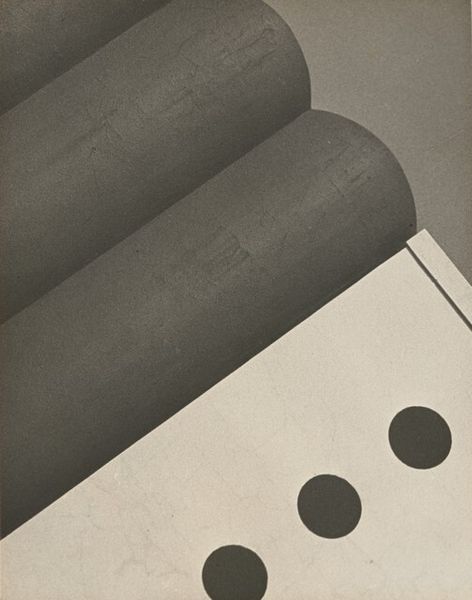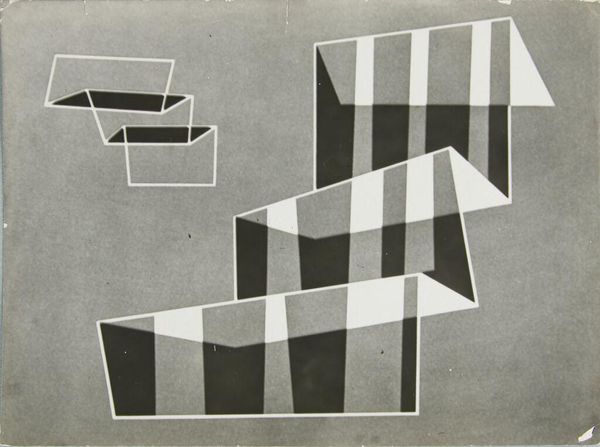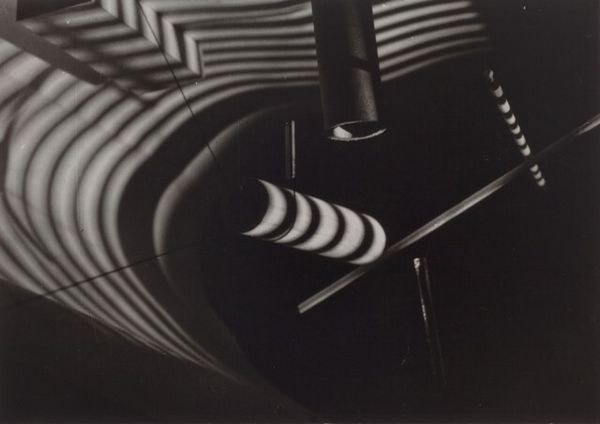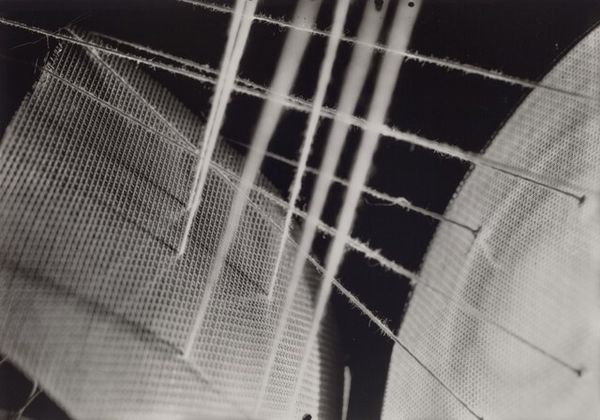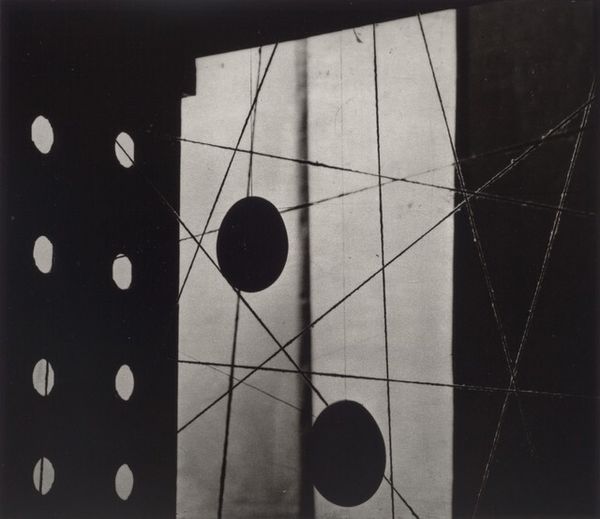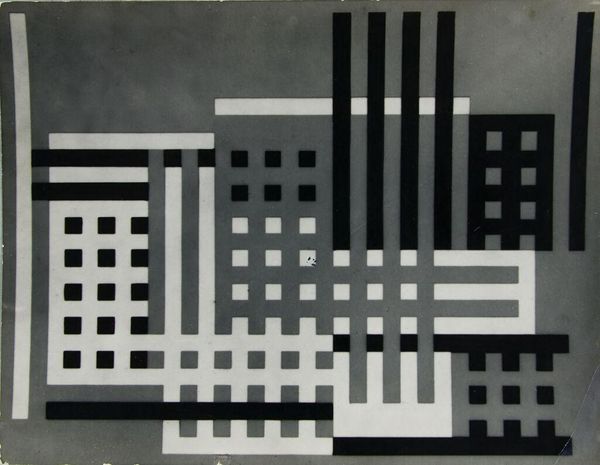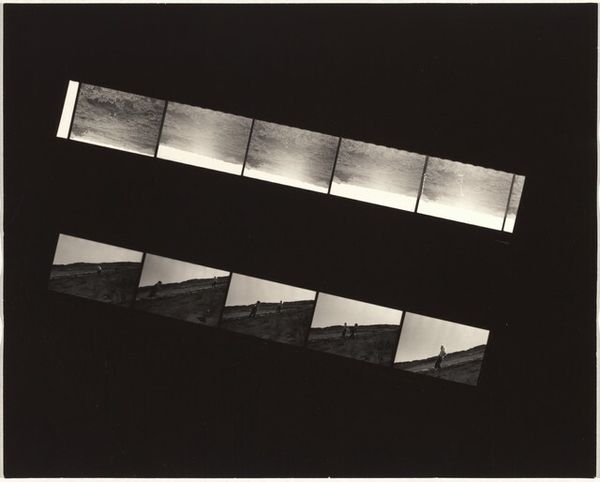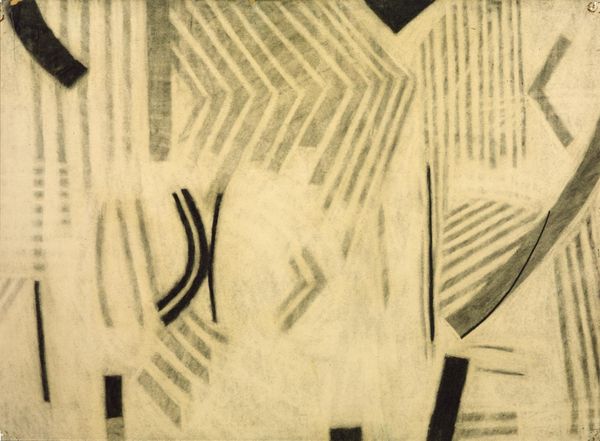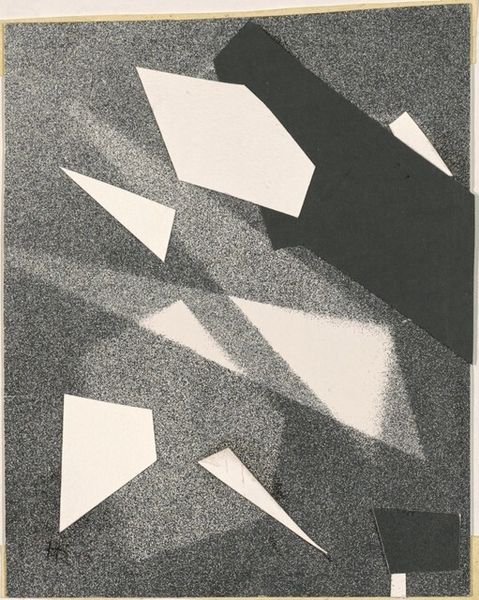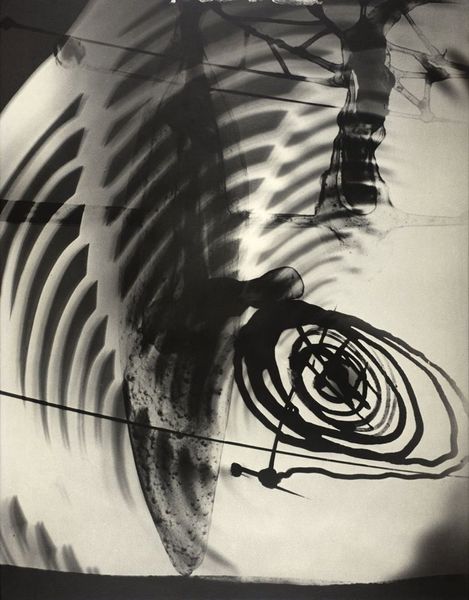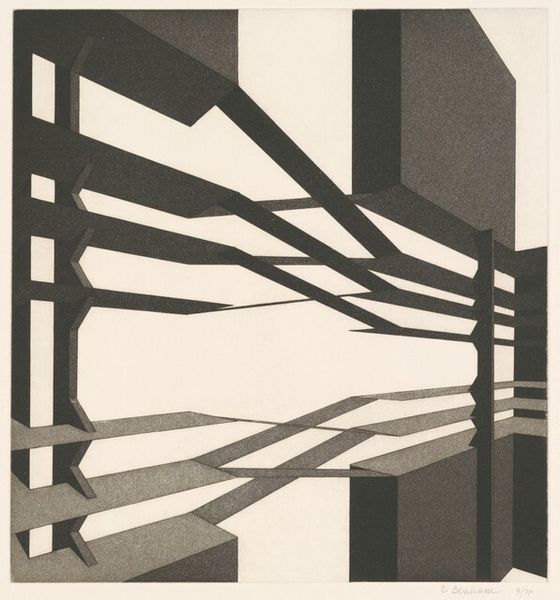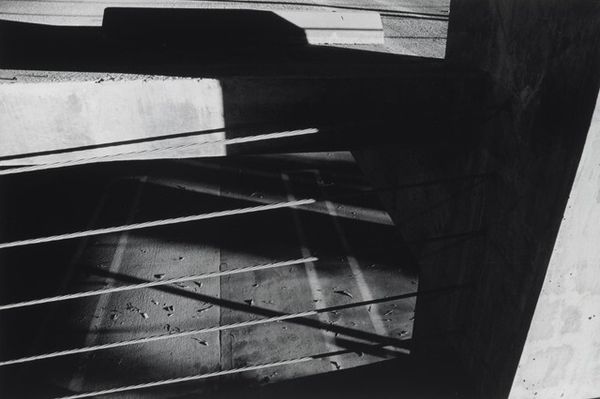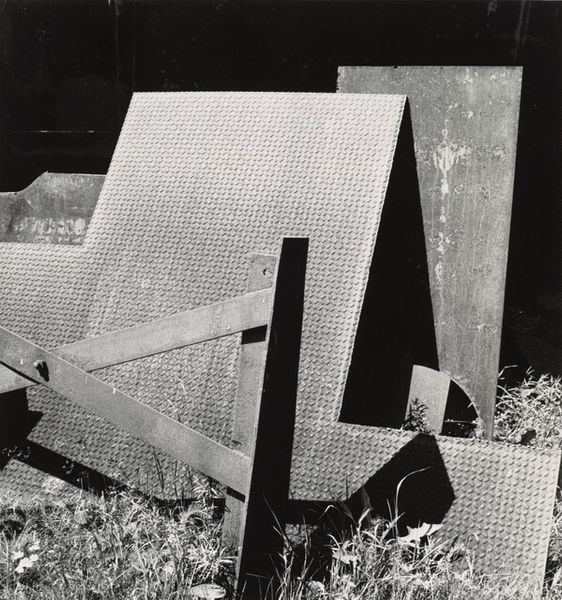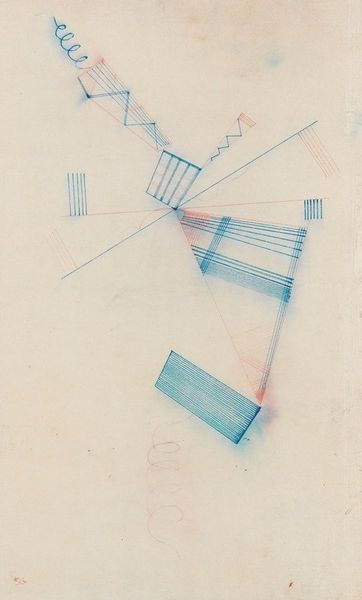
Dimensions: image: 24.3 x 16.8 cm (9 9/16 x 6 5/8 in.) sheet: 28.8 x 19.6 cm (11 5/16 x 7 11/16 in.)
Copyright: National Gallery of Art: CC0 1.0
Editor: This black and white photograph from 1916, simply titled "Photograph," is by Paul Strand. I'm struck by how the interplay of light and shadow transforms everyday objects into almost abstract forms. It feels both very modern and surprisingly graphic. What do you see in this piece? Curator: Ah, yes, Strand. He wasn't just taking pictures, was he? More like teasing secrets from light itself. This photograph, you see, is all about distillation. Strip away the 'what' and focus on the 'how'. It's as if he’s whispering, "Forget you know what these shapes are. Feel the stark dance of line and plane." Don't you find yourself caught between the solid forms and the ethereal shadows? Editor: Definitely! It’s almost like a puzzle. I can see the suggestion of objects, but they're not fully defined, and the shadows become just as important as the objects themselves. Curator: Precisely! And that, my friend, is the magic trick. Strand, a bit of a rebel, by the way, uses light to create a new visual language. He transforms the ordinary into something extraordinary. It asks: "What IS real? Is it the object itself, or the way light shapes our perception of it?" Does this inspire you to play with light when you create your own work? Editor: It really does! It makes me think about how light can distort and reimagine the world around us. Curator: Wonderful! It makes one question the way we define abstraction, what is and isn’t art, maybe? The next time the sun is casting wild shadows, pause a moment and notice the drama being presented right before you. Art isn't always about grand gestures, sometimes it's about simply *seeing* the extraordinary in the everyday. Editor: I’ll be sure to remember that. Thank you.
Comments
No comments
Be the first to comment and join the conversation on the ultimate creative platform.
